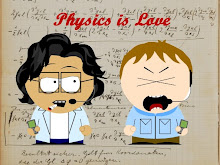http://www.nature.com/news/2007/070618/pf/070618-17_pf.html
muse@nature.com: The patent threat to designer biology:
Behind scare stories of building synthetic life lies the issue of who owns the biological parts.
Philip Ball
"For the first time, God has competition", claimed the Action Group on Erosion, Technology and Concentration (ETC Group) two weeks ago. With this catchy headline, it aimed to raise the alarm about a patent on "the world's first-ever human-made species", a bacterium allegedly created "with synthetic DNA" in the laboratories of the Venter Institute in Rockville, Maryland.ETC had discovered a US patent application filed last October by scientists from the Venter Institute for what the scientists claim are the 381 essential genes needed to make an organism. The genes are found in Mycoplasma genitalium, a naturally slimmed-down microbe that has just 485 genes that encode proteins.The action group seemed to be confused about whether the synthetic bacterium, which they dubbed 'Synthia', had actually been made. It hasn't — yet. But beyond the seemingly scary notion that a man-made bug is lurking in a lab somewhere, ETC was concerned that someone might be able to patent it.If the patent were granted, anyone wanting to design an organism from these genes would need to apply for a license. "These monopoly claims signal the start of a high-stakes commercial race to synthesize and privatize synthetic life forms," claimed ETC's Jim Thomas. "Will Venter's company become the 'Microbesoft' of synthetic biology?"Now, that's a better question (if posed rather hyperbolically). I'm told by scientists in the field that the patent application has little chance of success, but it does raise an important issue. Patenting of genes has been a controversial matter for many years, but the advent of synthetic biology takes the debate to a new level.Living devicesIt is arguably a distortion of the idea of 'invention' to patent genes that exist in nature, even if the patenter has worked out how to use it for a particular application. But if you can start to make new 'devices' by arranging these genes in new ways, doesn't that qualify? And if so, how small and rudimentary a 'part' becomes patentable?Scientists gathered in Greenland last week at a meeting called "The merging of bio and nano — towards cyborg cells" were well placed to address such questions. At that conference, supported by the Kavli Foundation in Oxnard, California, Drew Endy of the Massachusetts Institute of Technology in Cambridge admitted that the intellectual-property framework for synthetic biology remains unresolved. Endy and his colleagues are creating a 'Registry of Standard Biological Parts' to be used as the elements of genetic circuitry just like the transistors, capacitors and so forth in electronics catalogues. This registry places the parts in the public domain, which can provide some protection against attempts to patent them.
A bacterial camera: Could advances like these soon be blocked by patenting?Researchers have already organized 'cassettes' of natural genes into modules that can be inserted into microbial genomes to give the organisms new types of behaviour — such as making them flash on and off with light1, or acting like photographic film2. Such efforts would be impossibly expensive and slow, Endy says, if the intellectual-property rights on all the components had to be cleared first. It would be as if, he says, you had to apply for a license to use every command instruction in a piece of computer code.In synthetic biology, that sort of patenting seems disturbingly easy right now. "You can take any device from the Texas instruments TTL catalogue, put 'genetically coded' in front of it without actually demonstrating it in practice, and you have a good chance of getting a patent," says Endy.Help not hinderPatenting has been a brake on the useful applications of biotechnology, according to bioengineer Jay Keasling of the University of California, Berkeley, who was also at the Greenland meeting. Keasling has been working for several years to engineer microbes to synthesize a compound called artemisinin — one of the best available drugs for fighting malaria3.When the ETC Group dismisses efforts to use synthetic biology to address global problems as one of their marketing strategies, I think they are grossly misjudging the researchers and their motives. Keasling wants to use it to save malaria victims. And One of Venter's goals is to use his microbes to provide cheap biofuels as a replacement for oil.But ETC may be right that patenting is a bad idea in this field. "If you want to have a community sharing useful and good parts, 20 years of patent protection is obviously not helpful," says Sven Panke of the ETH in Zürich, Switzerland, one of the organizers of the third Synthetic Biology conference being held there next week. "It would be very helpful if we could find a good way to reward but not impede."Legal experts too agree that something needs be done. "Synthetic biology presents a particularly revealing example of a difficulty that the law has frequently faced over the past 30 years — the assimilation of a new technology into... existing intellectual-property rights," wrote Arti Rai and James Boyle, from Duke University in North Carolina, in a recent paper4. "The way that US law has handled software on the one hand and biotechnology on the other could come together in a 'perfect storm' that would impede the potential of the technology."Copyright might provide an alternative way to reward innovative scientists. Or some form of novel legal framework. But no one is sure what will work best. Intellectual property is prominently on the agenda at the upcoming Swiss conference. "We are going to take a look at the issue," Panke says. "But we will not solve it. In Europe we are just starting to appreciate the problem."
Saturday, June 23, 2007
Subscribe to:
Post Comments (Atom)


1 comment:
People should read this.
Post a Comment